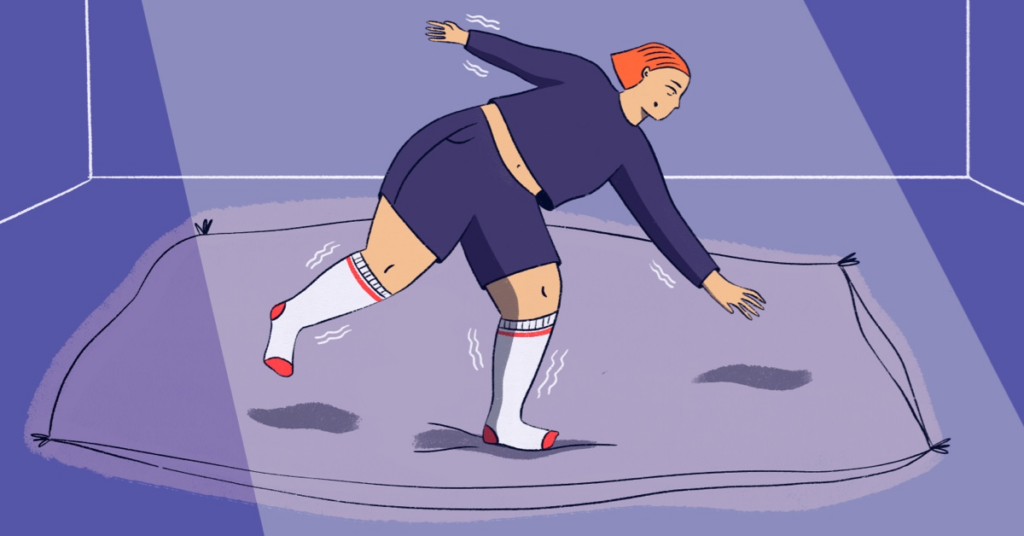A concern for many people with multiple sclerosis (MS) is the fear of falling. Loss of balance with this disease makes falling a common problem. But many find that slowing down, walking carefully, and learning to get up safely after a fall can be helpful.1
MulipleSclerosis.net recently published an article that highlighted some of these trials. Given the reaction it received, it clearly resonated with lots of people! Here are some of the themes that people shared in response to the article.
Foot drop
Along with impaired balance, foot drop is a common symptom of MS. This symptom results from nerve damage around the ankle. It makes it difficult to lift the feet when walking, which can lead to stumbling or falling. Several people shared the effect of foot drop on falling.1
“I have fallen so many times I’ve lost count. It has mostly been due to my foot drop.”
“Drop foot + ceramic tile = a heck of a shiner. 17 days later, it’s still a few fun colors.”
Walking aids
Many respondents shared their need to use mobility aids to walk safely. Uneven pavement combined with unsteady balance can lead to falls. Having a mobility aid like trekking poles or a cane, rollator, scooter, or wheelchair makes getting around safer.
“I’ve fallen a couple of times over cracks or raises in the cement, so now I walk with walking sticks and step on those darn cracks.”
“I’m in the process of getting a walking device to help me walk better and hopefully not fall as often. I can go 3 months without falling, then boom, a week or two of falling.”
“Walking already looks like I’m drunk with a lack of balance, but rough terrain makes it very easy to fall. I had to pick up a walking stick the last time I went for a walk.”
“Trekking poles any time I’m anywhere but my own house. They’ve kept me upright many times.”
Learning to slow down
Another common approach to the problem of falling is slowing down. Respondents shared the difference that going slower makes for their stability. Being mindful about stepping and thinking about foot placement also helps them avoid falls.
“I have learned to slow down. It’s absolutely necessary, and I have learned to look around because you never know what’s around the corner waiting to trip you up.”
“I’ve found I’m getting more off balance getting out of my chair, so it’s slow down watch my step.”
“I have found that reminding myself often to be intentional in my steps helps – pick up the foot, hold a rail on the stairs and slow down, pay attention to potential obstacles, etc. And if I can’t walk for a bit or start to feel wobbly, sit down, take a few deep breaths, and get reoriented.”
“The biggest thing is to stay aware when you move too fast without thinking. I have fallen for that reason.”
Getting up after falling
A fear shared by lots of people with MS is how to get back up after falling. When no one else is around, it can be challenging to regain a standing position. Several respondents explained their experiences with this.
“My main issue is getting up from the ground. The spasticity in my legs and arms is so bad that if I stumble, I may not be able to get up without help.”
“I fell in a cemetery once and had to crawl pretty far to find a headstone so I could stand up.”
“The other issue for me is not just falling itself, but if the inevitable were to happen, how do I get back up?? Such as, when outdoors, what if I’m in a place where there is nothing to use to get myself back up? I have had incidents outdoors where, luckily, there have been very kind people about to get me back up, but what if there aren’t? It’s scary!”
References
1. Mobility and Walking Issues. Multiple Sclerosis Association of America. Available at https://mymsaa.org/ms-information/symptoms/mobility/. Accessed 7/24/2024.


